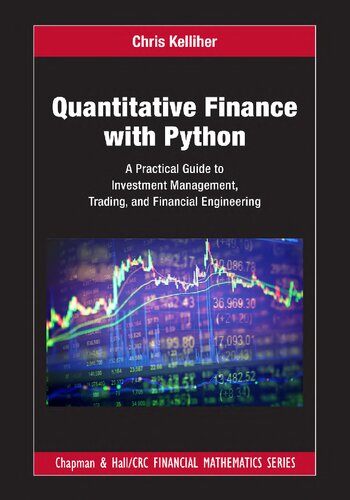موضوعات
آموزش و پرورش
ادبیات و زبان
پزشکی، دندانپزشکی و داروسازی
تاریخ و جغرافیا
داستان و رمان
دیگر
دین و فلسفه
روانشناسی
ریاضیات و آمار
سلامتی، تناسب اندام و رژیم غذایی
شیمی و پلیمر
علوم اجتماعی و حقوق
علوم زیستی و بیوتکنولوژی
فیزیک و نجوم
کامپیوتر و اینترنت
کتابهای کودکان و داستان
کسب و کار و اقتصاد
کشاورزی و دامپزشکی و غذا
معماری
مهندسی و فناوری
هنر و تئاتر
محصولات
Quantitative Finance With Python: A Practical Guide to Investment Management, Trading, and Financial Engineering - Original PDF
نویسندگان: خلاصه: In March 2018, the Federal Reserve (“Fed”) was in the midst of its first hiking cycle in over a decade, and the European Central Bank (“ECB”), still reeling from the Eurozone debt crisis, continued to charge investors for the privilege of borrowing money. US sovereign bonds (“Treasuries”) were yielding 3% over their German coun- terparts (“Bunds”), an all-time high, and unconventional monetary policy from the two central banks had pushed the cost of protection to an all-time low. Meanwhile, across the pond, a sophisticated Canadian pension flipped a rather esoteric coin: A so-called digital put-on Euro/Dollar, a currency pair that trades over a trillion dollars a day. On this crisp winter morning, the EURUSD exchange rate (“spot”) was 1.2500. If the flip resulted in heads and spot ended below 1.2500 in 2 years, the pension would receive $10 million. If the flip were tails and spot ended above 1.2500, the pension would have to pay $2.5 million. Naturally, the 4 to 1 asymmetry in the payout suggests that the odds of heads were only 25%. Interestingly, the flip yielded heads, and in 2 years, spot was below 1.2500آیا کتاب مورد نظر هنوز بر روی سایت قرار نگرفته است؟ جای نگرانی نیست! کافی است بر روی گزینه سفارش کتاب کلیک کرده و درخواست خود را ثبت کنید. در کمتر از چند ساعت کتاب شما را آماده خواهیم کرد.
